Paris in the Middle Ages
Paris has a long and rich history, and the medieval period is particularly interesting. Though much of medieval Paris has been lost, remaining structures like Notre Dame Cathedral and the Sainte Chapelle still attract tourists millennia later. And, if you look closely, other lesser-known medieval sites can be found throughout the city.
Do you want to travel back in time to medieval Paris? Keep on reading for the best medieval buildings in Paris and other sites nearby…
Are You Planning a Trip to Paris Last Minute?
If you are booking a last-minute trip to Paris, I’ve got you covered! Below are our guides, top tours, hotels, and more:
» Plan: Paris Travel Planner; Paris Arrondissements Guide; Check out the best Paris Metro tickets for tourists
» Book your flight tickets with Omio; book your train tickets with Omio
Book your transfer from the airport to the city with Welcome Pickups.
» Where to Stay: Best Districts to Stay in Paris
- Le Pavillon de la Reine (historical 5-star hotel in Le Marais)
- Hotel La Comtesse (mid-range hotel with Eiffel Tower view from all the rooms!)
- Hotel Ducs de Bourgogne (super central 4-star hotel near the Louvre)
» Top-Rated Paris Tours & Tickets:
- Louvre Museum Skip-the-Line Ticket
- Eiffel Tower Summit Access Ticket
- Seine River Night Cruise
- Château de Versailles and Gardens
- Catacombs Skip-the-line tour with VIP access to restricted areas
Want skip-the-line access at museums & attractions in Paris? Get your hands on a Paris Museum Pass!
» Don’t leave without travel insurance! SafetyWing Essential plan works well for long and short trips (from 5 days up). Can also cover electronics theft through their add-on.
What Did Medieval Paris Look Like?
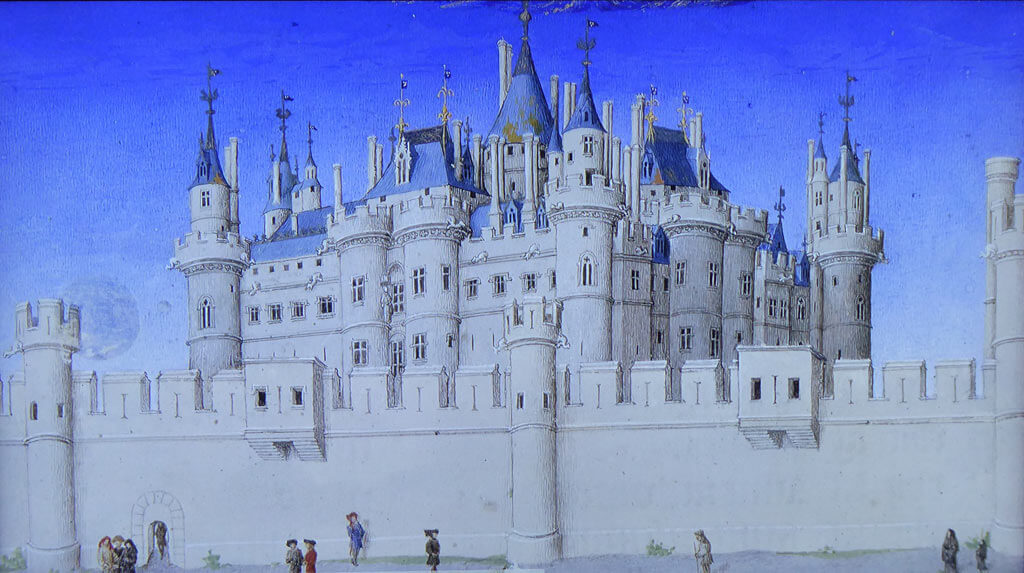
What did Medieval Paris look like? Paris in medieval times was much smaller than today, with 150,000 to 200,000 inhabitants. Paris was a flourishing city that saw the birth of some of the greatest buildings we know today: Notre-Dame Cathedral, the Sainte Chapelle, the first covered market of Les Halles, and the Palais de la Cité.
In the 13th century, Paris was delimited by Philippe Auguste’s walls, which were built between 1190 and 1230. The medieval city consisted of Ile de la Cité – the political and religious center of Paris, – the University area on the Seine’s Left Bank, and a small area on the Right Bank where the people lived.
In the 14th century, Paris was enlarged and delimited by Charles V’s walls (1356-1383). The new enclosure encompassed the former suburbs of Saint-Paul, Temple, Sainte-Marguerite, Saint-Martin-des-Champs, les Filles-Dieu, Saint-Sauveur, Saint-Honoré, and Les Quinze-Vingts. The city then covered 440 hectares and was home to more than 200,000 inhabitants.
Medieval Paris Map
On this medieval Paris map, you can see the walls of Philippe Auguste and Charles V, the royal buildings (marked in red), and the main communal sites (marked in violet).
The other Paris medieval buildings marked on this map correspond to religious buildings, private mansions, and colleges.
As you can see, medieval sites like the Abbey of Saint-Germain-des-Prés and the Abbey of Saint-Victor were located outside of Paris.

Where to Find Medieval Paris – Sites and Medieval Buildings in Paris
Here are the must-see buildings and medieval sites in Paris. You can visit these medieval Paris sites alone or with a guided tour like this top-rated Paris Medieval tour with an expert guide.
1. Notre Dame de Paris
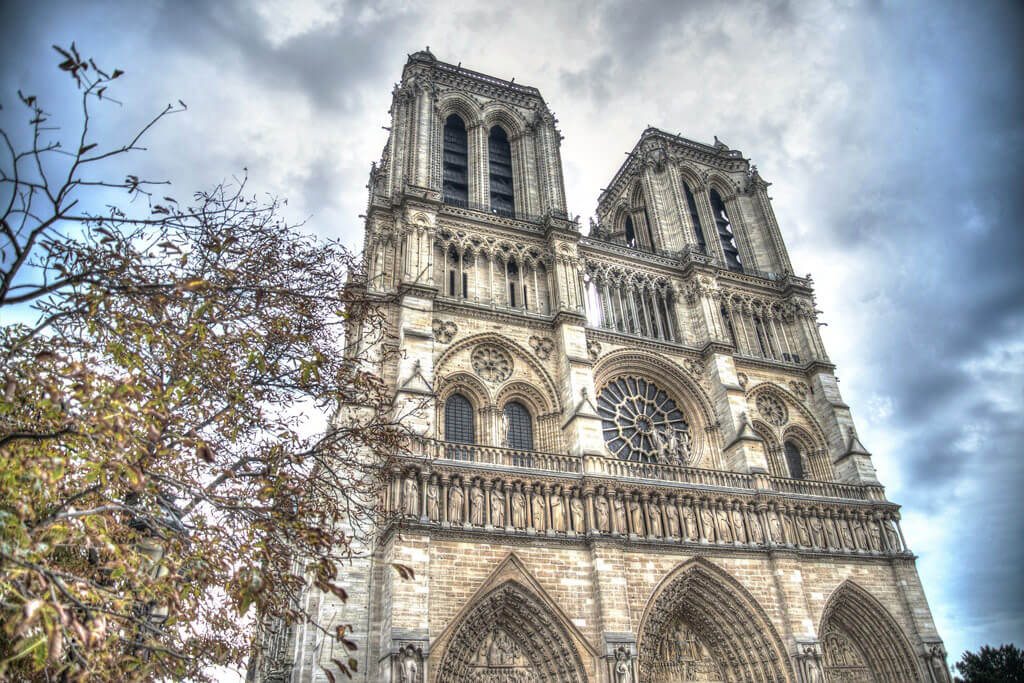
Located on Ile de la Cité, Notre Dame Cathedral was the beating heart of medieval Paris. The construction of one of the first Gothic cathedrals in France started in 1163 and was completed in 1345.
Notre Dame Cathedral was severely damaged during a fire in April 2019. During the fire, parts of the roof and the spire were destroyed forever; however, the main façade and its twin towers were saved, as were the Cathedral’s treasures.
From the Parvis of Notre Dame, look up for the huge rose window, the statue of Our Lady of Paris, and the 28 sculptures below representing the Kings of Judah and Israel, the ancestors of Christ.
After 5 years of restoration work, Notre Dame reopened its doors in December 2024. Check out how to visit Notre Dame Cathedral during your next trip to Paris.
Address: Parvis Notre Dame – Place Jean-Paul II, 75004 Paris; opens from Monday to Friday from 7.45 a.m. to 7 p.m. and from Saturday to Sunday from 8:15 a.m. to 7:30 p.m.
2. The Sainte Chapelle
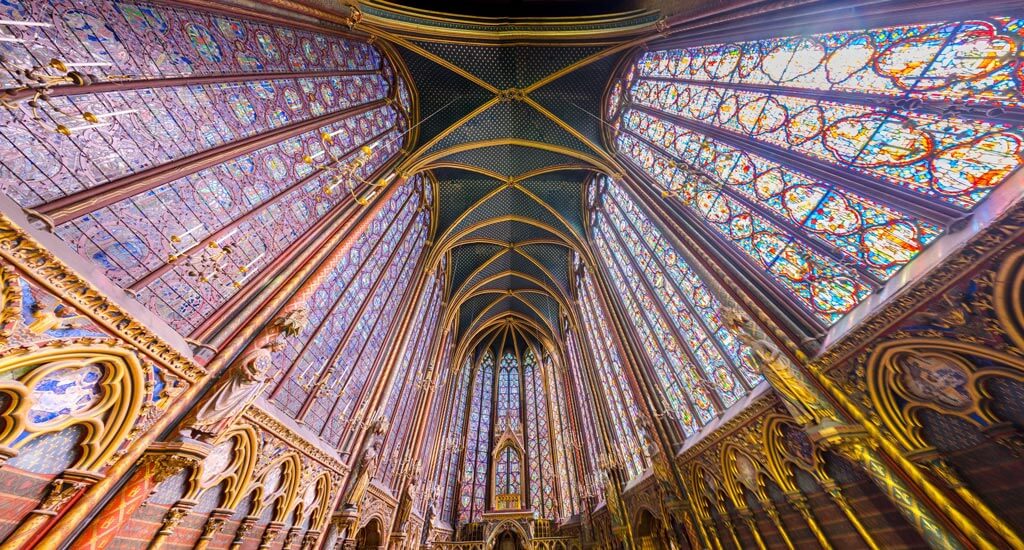
In medieval Paris, the royal palace was located on Ile de la Cité, not far from Notre Dame Cathedral. Only two buildings remain from this former palace: the Sainte Chapelle and the Conciergerie.
One of the most famous medieval buildings in Paris, the Sainte Chapelle was the royal chapel. It was built in Gothic style in just seven years, from 1238 to 1248, to host the Holy Crown of Thorns, a piece of the True Cross, and various other relics of the Passion.
The Chapel has two floors: the upper floor for the royal family and the lower floor for the staff of the Palace. Today, the Sainte-Chapelle has one of the most extensive 13th-century stained-glass collections in the world, and they are a true wonder.
TIP: Experience one of the most breathtaking sights in Paris, beautifully illuminated at night, while enjoying a superb performance of classical music. The concerts feature favorite works of the classical music repertoire, performed by excellent soloists and ensembles. Click here to see the program during your trip to Paris.
Address: 10 Boulevard du Palais, 75001 Paris; opens every day, from 9 a.m. to 7 p.m. – Click here to buy your tickets
3. The Conciergerie
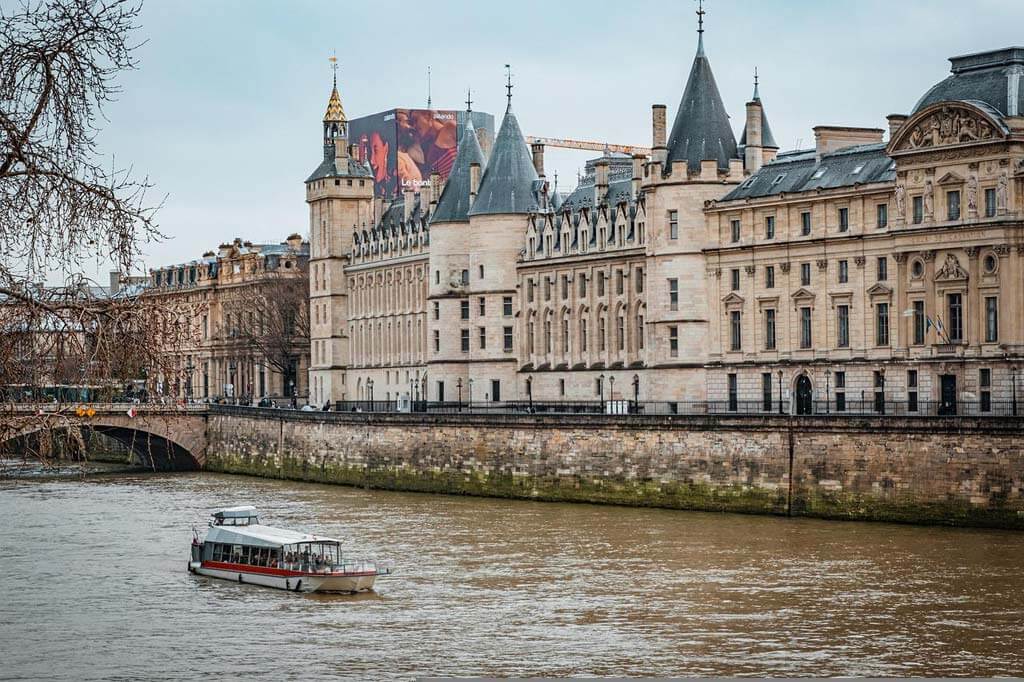
The Conciergerie is the main vestige of the royal palace of Ile de la Cité. It hosts two beautiful medieval halls and the palace’s kitchens.
Centuries later, when the royal family moved to the Louvre Palace, it was used as a court and prison. Today, visitors can explore the dungeons and the chapel where Queen Marie-Antionette was held prisoner during the last days before dying under the guillotine.
Address: 1 Boulevard du Palais, 75001 Paris; opens every day, from 9:30 a.m. to 6 p.m. – Click here to buy your tickets
TIP: Save time and money! This combo ticket Sainte Chapelle + Conciergerie gives you skip-the-line access to these unique sites at a discounted price.
4. Medieval Louvre
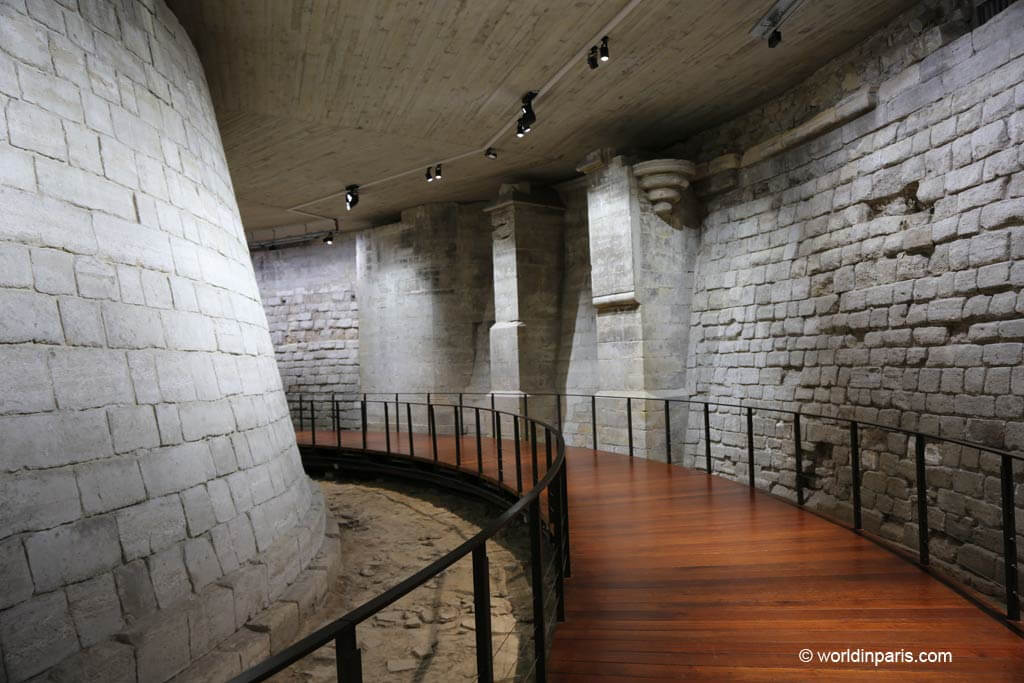
This is one of the most important medieval buildings in Paris. The construction of the Louvre Palace started in the 12th century under the rule of King Philippe Auguste. The new royal palace was a small medieval castle, part of the fortress protecting the city.
This first Louvre building was square in plan, with circular defensive towers and an imposing central keep. The Louvre was separated and protected from the Seine River by a moat fed by the River’s waters.
During the Grand Louvre Project, the renovation works unveiled some parts of the medieval Louvre. After a great mise en scène, visitors of the Louvre Museum can see part of the foundations of that first Louvre fortress, the moat, and also parts of the defensive towers.
Address: Rue de Rivoli, 75001 Paris; opens from Wednesday to Monday, from 9 a.m. to 6 p.m. – Click here to buy your tickets
5. Paris’ Medieval Walls
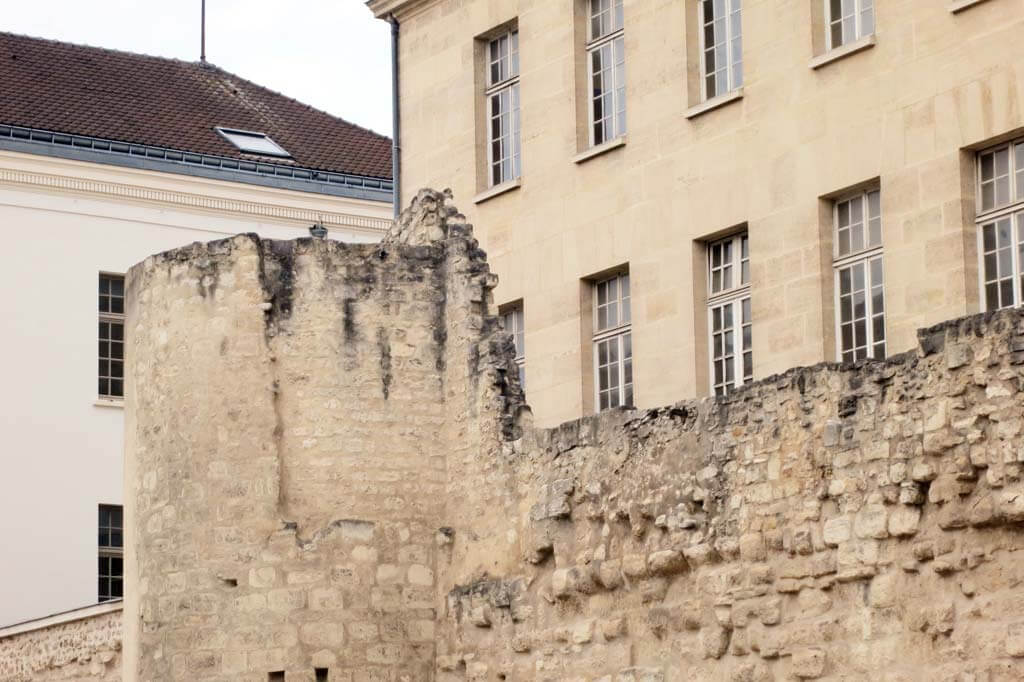
In the 12th century, medieval Paris was delimited by the Walls of Philippe Auguste. Before leaving for the Crusades, the king wanted to protect Paris from a possible military attack, so he built a solid wall with ten gates punctuated by almost 80 turrets.
Today, visitors can still see some remains of these medieval walls. The most impressive parts are located in Le Marais. At the corner of Rue Charlemagne and Rue des Jardins Saint-Paul, you will discover a wall section of almost 60 meters!
At the beginning of the Hundred Years War, in the 14th century, Philippe Auguste’s enclosure turned out to be unsuitable for the new war techniques and weapons; that’s why King Charles V reinforced and modified the walls’ layout.
Unfortunately, there are not many parts of the Walls of Charles V left. You can see a big chunk at the Carrousel du Louvre (free access) and a small section at the entrance of the Bibliothèque de l’Arsenal in Paris 4.
6. The Bastille Prison
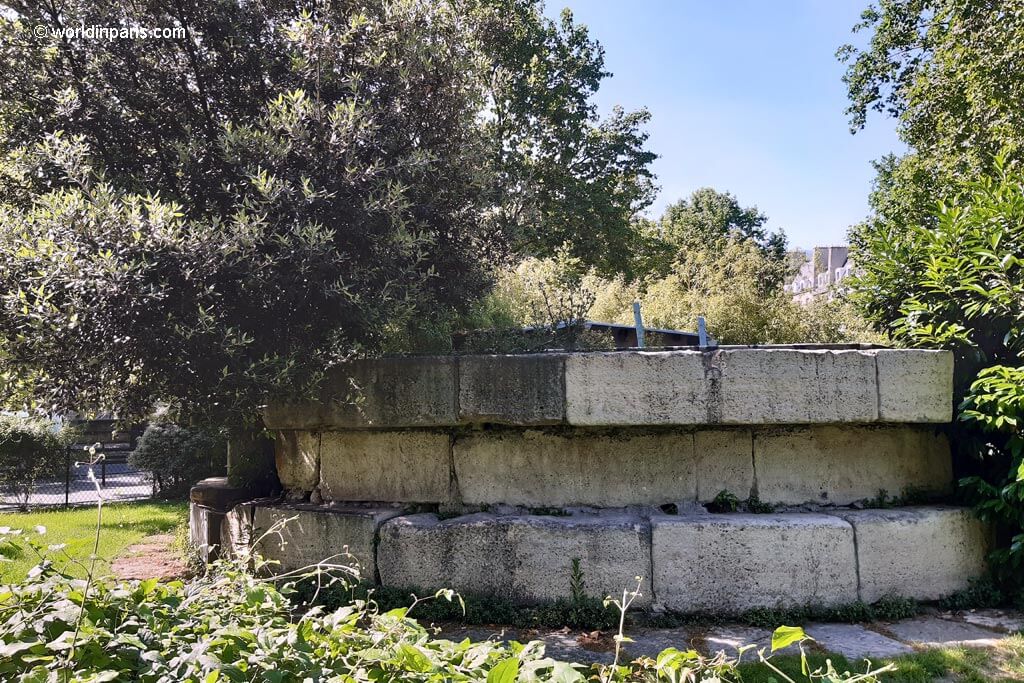
Anxious to protect his new hotel Saint-Pol in Le Marais and the Porte Saint-Antoine, King Charles V built a remarkable bastion, La Bastille, which had the fame and fate we know until its destruction in 1789.
The Bastille was located at today’s Place de la Bastille, and visitors can still see its layout marked on the floor. The remains of one of the turrets were moved to Square Henri-Galli, and it is one of the must-stops of this self-guided French Revolution walking tour.
7. Château de Vincennes
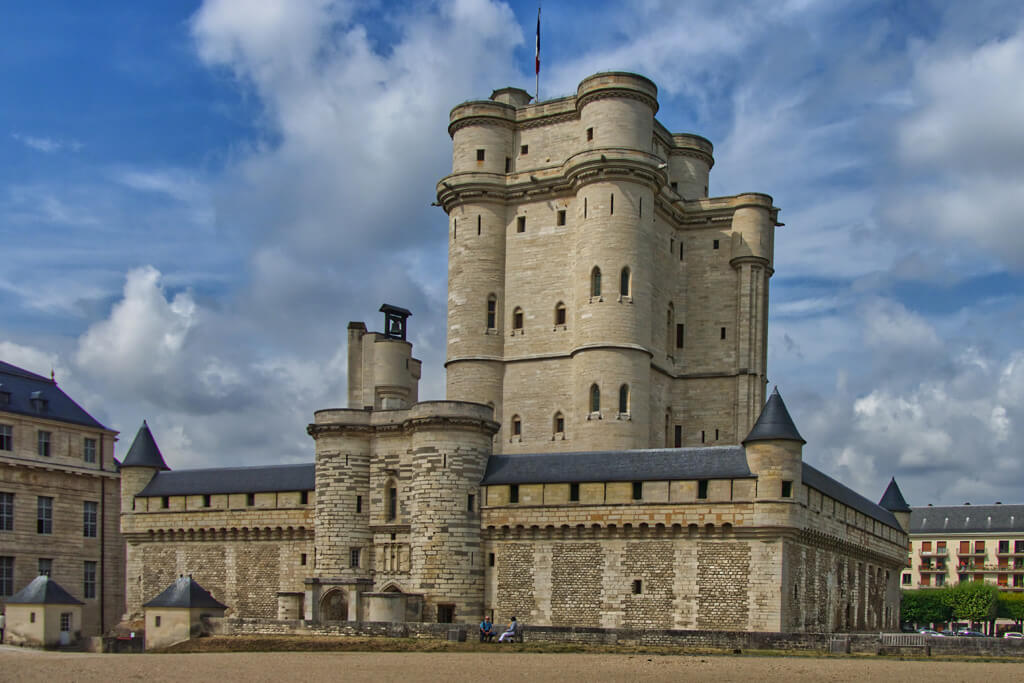
In his desire to fortify the east of Paris, King Charles V had an exemplary defensive structure built in Vincennes that could also accommodate the court. Château de Vincennes’ imposing keep contained the royal apartments and the king’s working space from where he ruled France.
Château de Vincennes is one of the best castles near Paris, and it is possible to reach by metro, line 1. Inside, there’s another Sainte-Chapelle with a design and proportions inspired by the Sainte-Chapelle on Ile de la Cité.
Address: Avenue de Paris, 94300 Vincennes; opens every day from 10 a.m. to 5 p.m. – Click here to buy your tickets
8. Hotel Cluny – Paris’ Medieval Museum
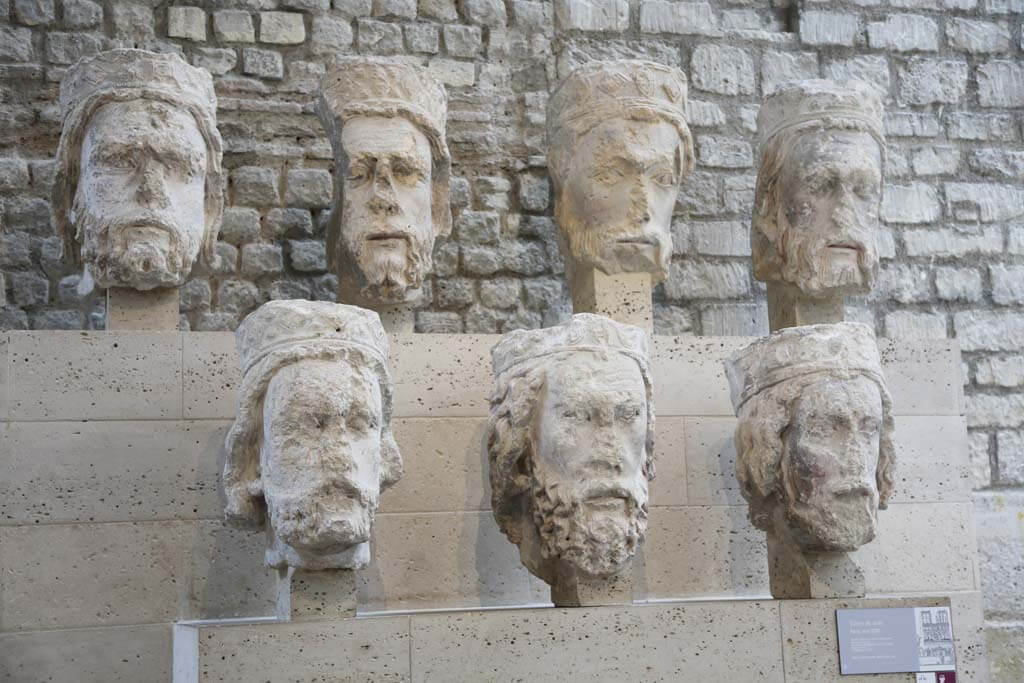
Musée de Cluny is one of the most remarkable medieval buildings in Paris. This beautiful private mansion built in flamboyant Gothic style was the residence of the Abbots of Cluny in Paris in the Middle Ages.
Today, Hotel Cluny hosts the National Museum of the Middle Ages and it is an interesting museum worth visiting. In addition to Medieval artifacts of all kinds and the famous Dame de la Licorne tapestry, this Paris medieval museum hosts some remains of Lutetia – Roman Paris.
Address: 28 Rue du Sommerard, 75005 Paris; opens from Tuesday to Sunday, from 9:30 a.m. to 6:15 p.m.
9. Tour Jean Sans Peur
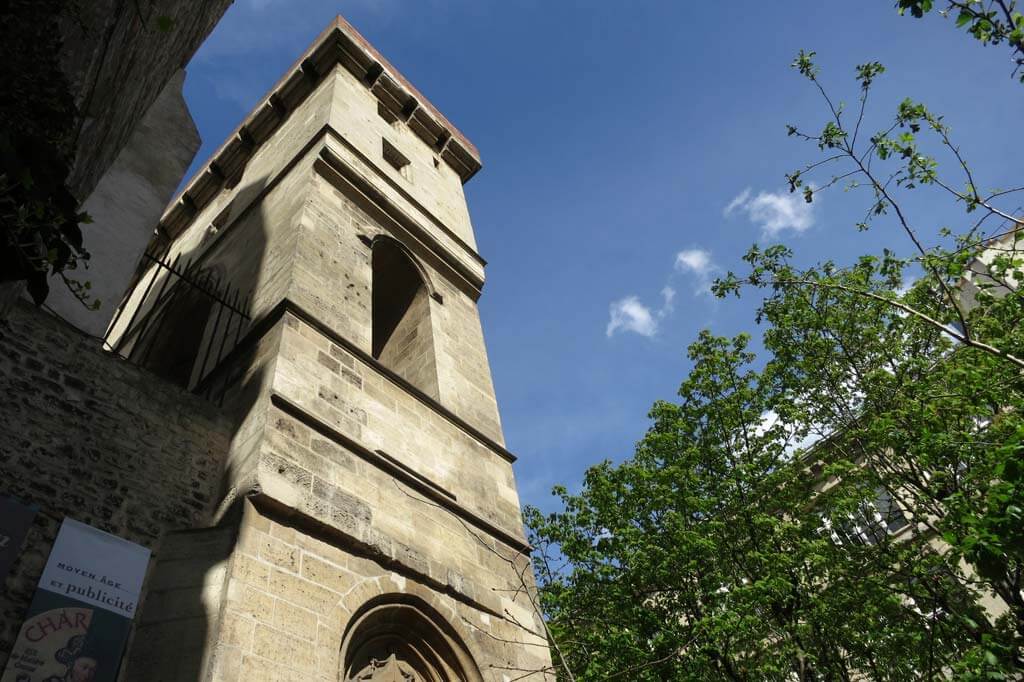
This beautiful keep located on the lively Rue Etienne Marcel (Paris 2) is the only vestige of military architecture in Paris in medieval times.
Its name comes from its builder, Jean de Bourgogne, who called himself “Jean Sans Peur” or Fearless Jean. Tour Jean Sans Peur was originally part of the Dukes of Burgundy’s residence in Paris, and it has a central staircase covered by a beautiful stone vault.
Address: 20 Rue Etienne Marcel, 75002 Paris; opens from Wednesday to Sunday, from 1:30 a.m. to 7 p.m.
10. Houses in Medieval Paris
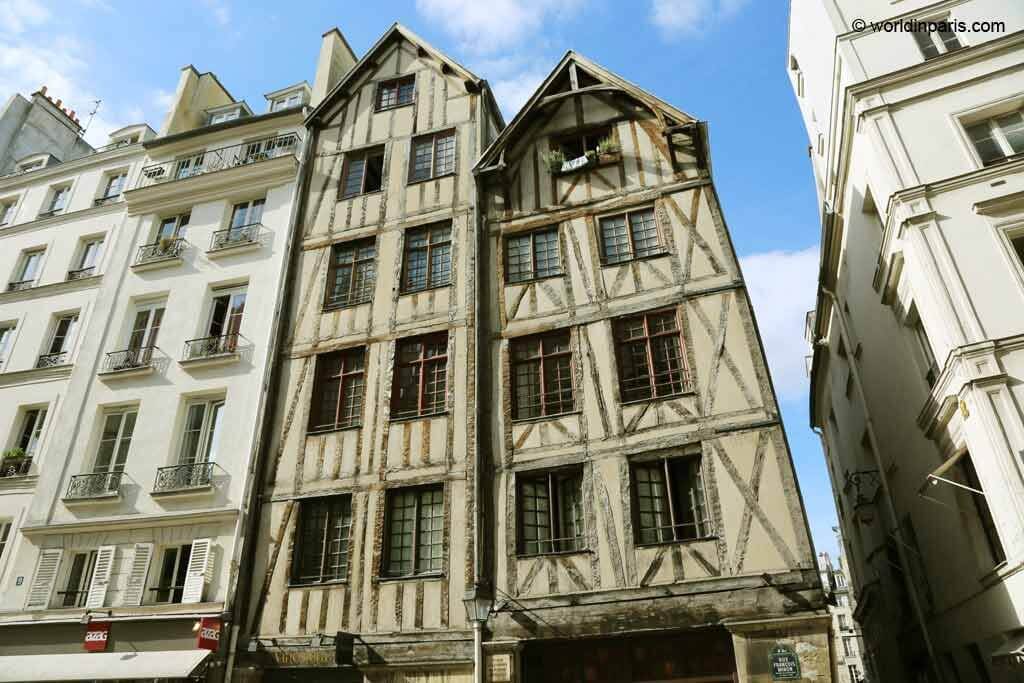
The half-timbered houses at 11-13 Rue François Miron, even if deeply reformed, give an idea of the typical constructions of Paris in the Middle Ages until the 15th century.
Wrongly known as the oldest house in Paris, the building at 3 Rue Volta (17th century) has a design very similar to the medieval houses in Paris, with a curbstone shop forming stalls on the ground floor.
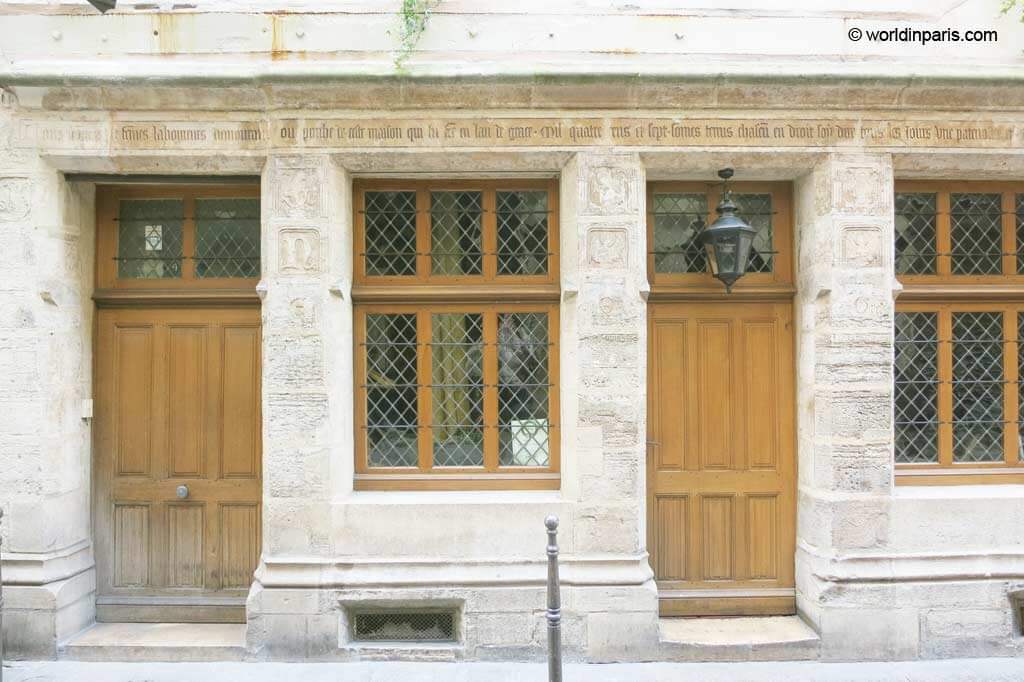
The Maison de Nicolas Flamel (1407) at 51 Rue de Montomercy (Paris 2) is the oldest house in Paris. Some inscriptions on the façade are original!
Nicolas Flamel and his wife built this house to host vagrants. Today, it’s a restaurant offering good French cuisine named Auberge Nicolas Flamel.
11. Square Viviani

The Square René-Viviani is undoubtedly one of the most unusual in Paris. This garden, located in the Latin Quarter and overlooking Notre Dame Cathedral, is dotted with historical remains of all kinds. There is even the oldest tree in Paris!
Saint-Julien-le-Pauvre Church (1 Rue Saint-Julien-le-Pauvre) is the oldest in Paris. It was rebuilt in the 12th century on the ruins of a church destroyed by the Normans in the 9th century. The church played an important intellectual role during the creation of the University of Paris, then became the chapel of the Hôtel-Dieu in 1660. Today, Saint-Julien-le-Pauvre is dedicated to the Melchitec Greek Catholic religion – the Catholic Church of the Byzantine rite.
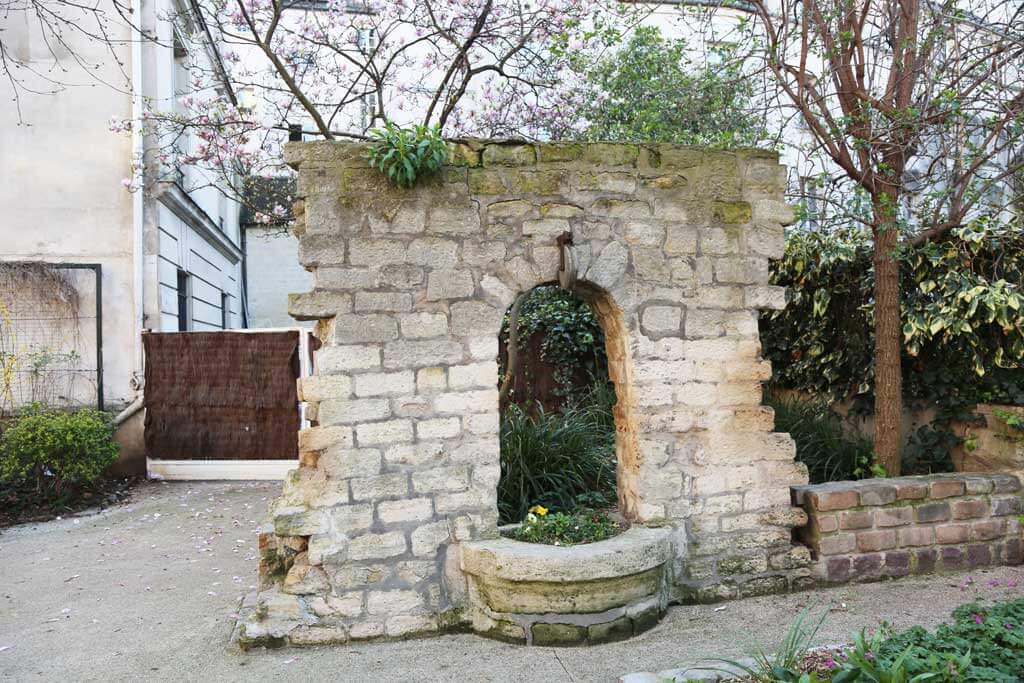
In the shaded part of the park, you will find the remains of a medieval well dating from the 12th century, as well as ancient sculpted stones from balustrades, pinnacles, and Gothic capitals.
Not from medieval times, but it is also here that you will find the oldest tree in Paris, which is listed as a remarkable tree. It is a colossal acacia planted in 1601 by the botanist Jean Robin, who introduced the species to France. For more than 400 years now, the oldest tree in the capital has flowered every spring.
12. Parish Churches

Certain parish churches that dotted medieval Paris are still visible. I have already talked about Saint-Julien-le-Pauvre Church in Square Viviani, but there’s more.
The most beautiful examples are Saint-Germain l’Auxerrois Church – in front of the Louvre Museum –, Saint-Eustache Church, and Saint-Severin Church, with its extraordinary deambulatory in flamboyant Gothic style.

There were also a significant number of monastic and collegiate establishments in and around medieval Paris. Parts of Saint-Germain-des-Près Abbey are amongst the oldest architectural elements of today’s Paris, while the Saint-Pierre Church is the last remaining vestige of the Abbey of Montmartre, founded in 1134. Today, part of the Musée des Arts et Métiers, the former Saint-Martin-des-Champs Church, bears witness to the passage from Romanesque to Gothic art.
13. Cloître des Billetes

Dating from 1427, the Cloitre des Billettes in Le Marais is the very last medieval cloister in the French capital. Built in the heart of the parish Church of Billettes, it has retained its appearance over the last 600 years, while the church has undergone many modifications and restorations.
Address: 24 Rue des Archives, 75004 Paris; opens from Monday to Sunday, from 11 a.m. to 7 p.m.
14. Collège des Bernardins

Located in the Latin Quarter, on a small street overlooking Boulevard Saint-Germain, you can visit one of the most beautiful vestiges of Paris in the Middle Ages, dating from the 13th century.
This vast space with pointed arches was the refectory of the Collège des Bernardins, a place of knowledge that welcomed young monks and professors from all over Europe. The Collège des Bernardins contributed to the intellectual influence of the city and the University of Paris until the Revolution.
Address: 20 Rue de Poissy, 75005 Paris; opens from Monday to Saturday, from 10 a.m. to 5:45 p.m.

